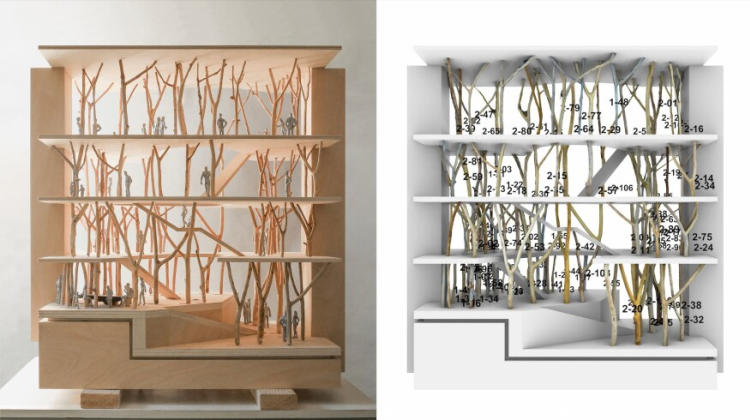Digital Structures group's Tree Forms Headlines Architect Magazine

For full credits please see: https://oddsandmods.mit.edu/news/tree-form
Tree Form, now on display at the 19th Venice Architecture Biennale, brings together Kennedy Violich Architects (KVA Matx), MIT Architecture, and WholeTrees Structures to explore the use of raw, minimally processed hardwoods in architectural design. The timber industry, often praised for its relative sustainability, conceals a surprising carbon footprint. Converting trees into engineered wood consumes vast energy, wastes up to 34% of harvested material in logging alone, and often introduces toxic adhesives. By bypassing industrial processing and embracing the natural form of trees, the Tree Form team presents a compelling case for a materially efficient, lower-emissions alternative. The project reduces wood waste by up to 40%, slashes embodied energy, and eliminates harmful binders by using trunks and branches in their natural geometries. The project reframes timber not as a raw input to be homogenized, but as a pre-designed structural system.
MIT's Digital Structures group, led by Professor Caitlin Mueller and supported by Ph.D. researcher Rachel Blowes, delivered technical analysis of how tree forks act as load-transferring structural joints. Y-shaped forks, typically discarded for their irregularity, actually contain intricate fiber networks ideal for structural applications. The team leverages natural complexity rather than flattening it, turning what was once considered biological “waste” into high-performance architectural components. A computational workflow scans and catalogs reclaimed tree forks, then algorithmically engineers them as structural components in a building load-bearing system. The collaboration demonstrates that cutting-edge computational tools and robotics can help us radically reimagine wood construction for innovative, sustainable, and beautiful design. This project is part of the larger ODDS & MODS teaching and research program that Caitlin Mueller leads with Prof. Sheila Kennedy that advances innovative circular design and construction in architecture.
Read more at Architect Magazine


